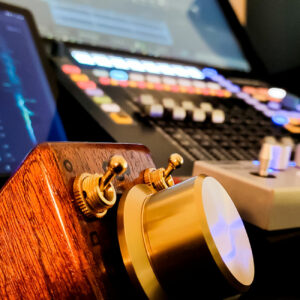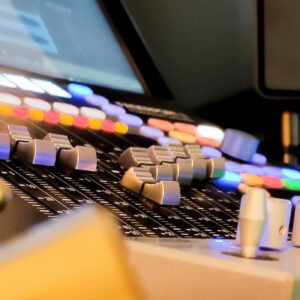Why Louder is not Better?
Louder does not always mean better in music production. In fact, trying to make something louder can often result in worse sound quality. Here are the main reasons why:
You do not control the playback volume of the consumer
As a producer or mix engineer, you have no control over how loud your music will be played back by the consumer. The consumer has the ability to adjust the volume to their liking, so there is no need to try and make your music as loud as possible.
Unless you work with a mastering engineer who would optimize that for you, just try to produce and mix based around the K-14 system or a similar approach. Then, at the mastering stage, reach our suggested ÐQ loudness target.
Pushing louder often implies sacrificing dynamics
Dynamics refer to loudness range in a piece of music, the range between the lowest and loudest parts. When making a signal louder, after a certain treshold, you have to compress, if not limit, its dynamic range in order to do so. This often results in a “squashed” sound that lacks the depth and nuance of a track with a wider dynamic range.
The main aspects of a over-compressed or over-limited sound are the bass feeling more empty and less punchy, the highs sounding harsher and less defined and the overall track can loose its impact due to having all parts almost, if not totally, equally loud. Music is greatly about conveying emotions through energy and dynamics are one of the best allies for do that.
Sidenote: Obviously, different types of music will imply different scales of dynamic range, such as Orchestral and Jazz music being more dynamics than some Techno or House music. That being said, even for the music genres with the less dynamics, they remains vital for the track to have depth, punch and definition.
Artefacts and distortion caused by the tools used to push louder
In order to make your track louder, you’ll often have the reflex to reach for tools such as compressors and limiters. While these tools can indeed help to even out the levels and make the track more consistent in volume, they can also introduce various artefacts and distortion that degrade the overall sound quality, especially at lower sample rates.
Most streaming platforms will turn your sound down
Since a few years now, loudness normalization has been implemented in most streaming platforms with loudness target values ranging from -16LUfs integrated to -13LUfs integrated with -1dB TP maximum True Peak.
Sacrificing the dynamics of your track to make it louder just for it to get turned down afterwards basically means that your music will sound worse than some more optimized. Finally about the True Peaks, this suggestion is to avoid unwanted distortion and artefacts to be caused by the streaming platform encoding.
At mastering stage at Smart DSP, we go a step further than simply following recommandations by using the necessary tools to preview, in real-time, your music through most of the main codecs used in the industry. This allows us to make sure your music will translate optimally.
The difference between perceived loudness and actual volume
Perceived loudness is the way that volume is perceived by the listener, and it is not directly related to the actual volume of a track (because of pshycoacoustics as well as the difference between how meters measures and how humans actually perceive loudness). A track with a great mixdown and preserved dynamics will not only sound louder to the listener once gain-matched with a squashed one but will also feel better, punchier and more refined.
A good mixdown is key to a great perceived loudness
Instead of trying to make a track as loud as possible by pushing a limiter on your master, a better approach is to focus on having a great mixdown and using well managed dynamics to sublime the energy of your track. This can help your music to sound louder and more engaging to the audience, without sacrificing sound quality.
(Bonus) You love the clipping sound caused by over-limiting a signal with various tools?
It does not keep you from getting the best of both worlds!
Why not experimenting with those tools at the mixdown on specific elements and busses only and with even more control over the type of effect that you want to achieve. This will yield better results most of the time!
Our piece of advice
In conclusion, trying to make something louder is not always the best approach in music production. It can result in worse sound quality and a lack of dynamics. A better approach is to focus on creating a great mixdown and using dynamics to your advantage, based on the context of the track and your artistic vision.
After reading the various reasons why presented above, I invite you to take a minute to think about it: Is really all of your hard work, time and efforts invested into producing and mixing your music worth being thrown away for a rushed last-minute mastering just to close this project or just for a few dBs more on a meter? In my humble opinion, defintely not!
2 reviews for Mastering (1 Track)
Only logged in customers who have purchased this product may leave a review.
Learn More!
Browse more articles below



Guilou (verified owner) –
Great quality. Great communication and feedback.
They give a professional touch to your track while still taking into account all your wishes and demands.
I recommand !
Beat Blender (verified owner) –
I had a mastering from DSP and i have to tell you that this guy knows what he does. The analysis of my mixdown was really to the point, i changed what he suggested and it my mixdown was really a REAL mixdown.
The mastering itself was also sublime, of course every body has his own wish but the change of the track was done also if he made the track himself.
I’m a big fan. Keep up the good work Evan.